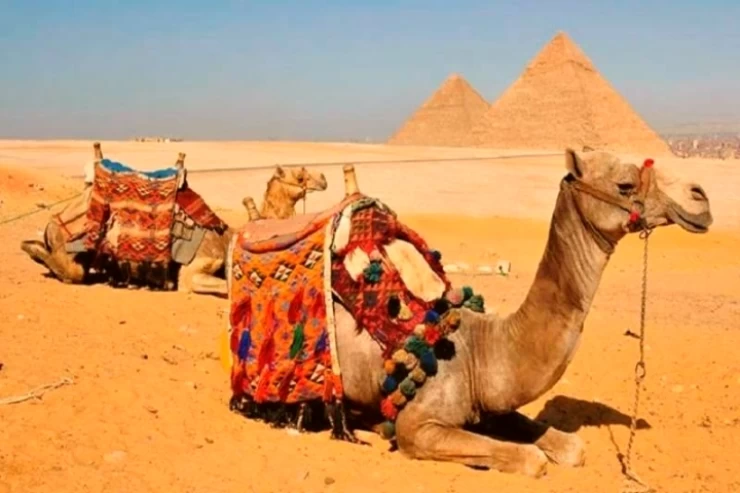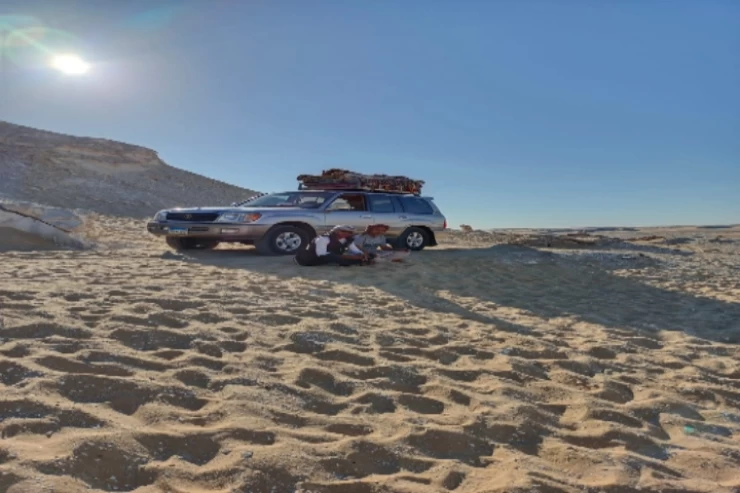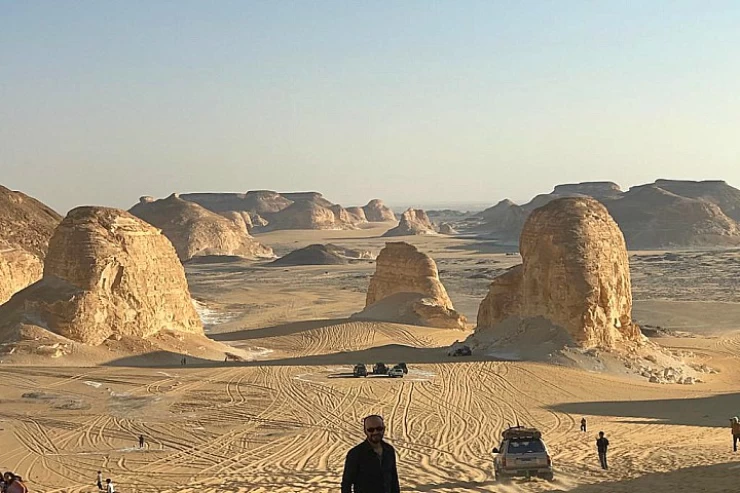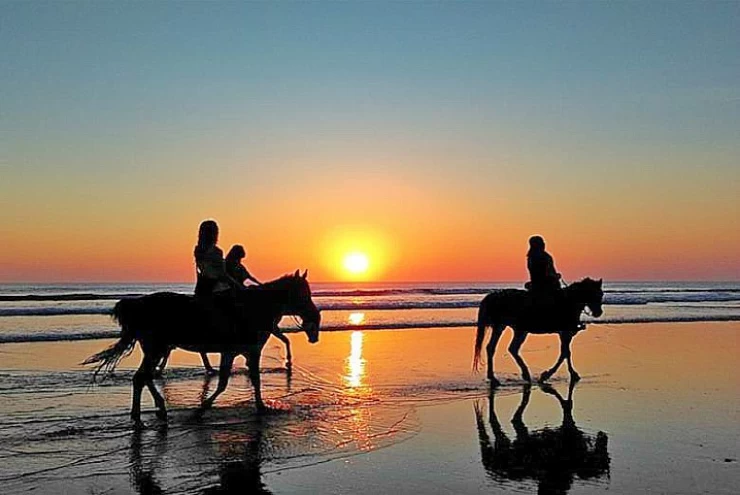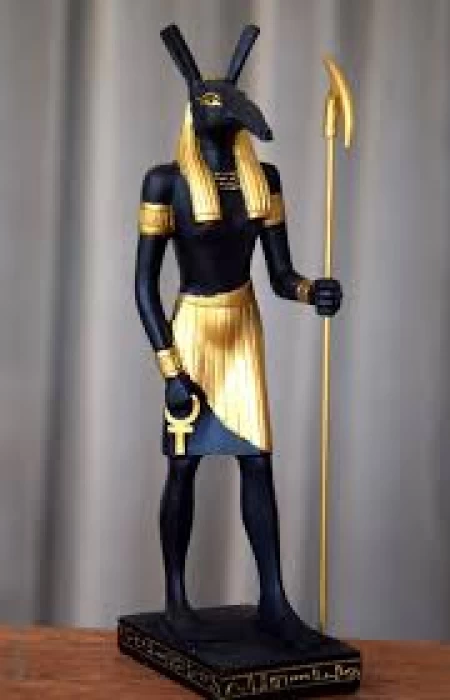
Dios Seth | Mitología del Antiguo Egipto
Según una creencia antigua, Dios Seth era el hijo de Geb y Nut, su esposa era la hermana Neftis.
Sin embargo, ninguna de las uniones con las muchas mujeres poseídas ha sido útil y esto probablemente estuvo relacionado con la esterilidad de los desiertos sobre los que se extendía el poder de Seth.
El cuerpo de este animal tenía manojos de piel que se formaban como flechas invertidas. En sus manos había un bastón largo que tenía la cabeza de un animal de Seth en la parte superior y estaba bifurcado en la parte inferior. Seth representaba sosteniendo un signo ankh (llave de la vida) en una mano y un bastón en la otra. Está asociado con el cerdo, el burro y el cocodrilo. También se le asoció con algunas criaturas venenosas como escorpiones, serpientes y, a veces, como hipopótamos.
Seth y Horus eran las dos deidades que simbolizaban a Egipto en los dos componentes étnicos. Todas las poblaciones asiáticas que se asentaron en Egipto, comenzando por los hicsos, tenían su principal divinidad en Seth.
Originalmente, Seth era adorado como un dios local en los distritos quinto y undécimo del Alto Egipto; en tiempos prehistóricos, fue el dios de todo el Alto Egipto. El culto de Seth se introdujo bajo el reinado del rey Peribsen en la Segunda Dinastía, en la región del Delta oriental, este rey incluso llamó a Seth-Peribsen. A partir de la era heliopolitana, los reyes que gobernaron Egipto de norte a sur eran "Siervos de Horus", por lo tanto enemigos de Set.
También era conocido por los egipcios como el dios de la guerra y las tormentas y estaba vinculado con el planeta mercurio y el color rojo. La gente odiaba a las personas de piel roja e incluso mataba animales de piel roja porque pensaban que estaban relacionados con Seth, ya que el hermano menor de Osiris, se puso celoso de él y lo asesinó. Después de matar a Osiris, Seth desmembró el cuerpo de Osiris y esparció los pedazos de su cuerpo sobre la faz de la tierra.
Set was the ancient Egyptian god of the desert and storms, and in later mythology, he was also the god of darkness and chaos. Set is depicted as a usurper who killed and mutilated his brother Osiris.
Seth is known for the rivalry he had against his brother Osiris. As the myth goes, Seth became jealous of the rule of Osiris over Egypt and planned to dethrone him. He deceived Osiris and trapped him in a chest, throwing him into the Nile. Afterward, he mutilated the body of Osiris into small bits and scattered it all over Egypt. This is what led to the continuous enmity between Seth and Horus, the son of Osiris.
The myth of the battle between Seth and Horus is perhaps the most essential myth of Egyptian mythology. The deities had several savage competitions among themselves to enjoy the privilege of ruling Egypt. Finally, Horus emerged as the victor by showing order triumphing over chaos, but not fully, because he continued to rule over the deserts and receive shrines heard by the desert warriors and wayfarers.
Though a god of chaos, Seth was also venerated in some places in Egypt. He was particularly venerated in the northeastern Delta region, and one of his principal cult cities was Avaris. The Hyksos, a foreign dynasty that ruled Egypt during the Second Intermediate Period (c. 1650-1550 BCE), identified Seth with their storm gods and made him a protective deity.
When pharaohs were honoring Seth, he was mostly associated with the military might of the country, such as in the case of Seti I and Ramses II of the Nineteenth Dynasty, as it was with regard to the use of Seth as a safeguard against enemies. Militaristic strength made Seth another important figure during the reign of the Egyptian rulers, giving those with divine protection legitimacy.
Set» is one of the ancient Egyptian gods. He is the god of storms and violence and is called «Set Nabti», meaning «Set, who belongs to the city of Nobet». He is the god of evil in ancient Egypt, where he killed his brother. However, Set played a good role, as he was known as the protector and the destroyer as well, as it is a complex combination. With Horus, he defends the king's name in the fern.
Egotistical and destructive yet completely necessary, Seth had an essential role in Egyptian mythology; like disorder, he was a necessary part of the cosmic balance, an order against which he is the embodiment of that struggle. Seth in different inter-
Seth (Set, Sutekh, or Setesh) is Egyptian mythology's most complicated and controversial deity. He had been a god of war, chaos, and storms, and of the desert, a powerful yet unpredictable force. Though he bore negative connotations, Seth was a vital and protective power in the universe's balance and was revered in some parts of ancient Egypt.
From the earliest parts of Egyptian mythology, Seth is usually derived. He was often portrayed as a most mysterious creature called the Seth animal, an archaic deity with an elongated curved snout, square ears, and a forked tail. Some interpretations have viewed this hybrid form as a reflection of his chaotic nature, such that he could not easily identify himself or the animal kingdom of the real world.
In the Egyptian arts, Seth was also shown as a strong warrior with huge scepters signifying further arguments over Africa and storms. His reddish skin was sometimes interpreted as suited to the dry and unfruitful lands, such as the deserts of Egypt, in contrast to the most fertile black soils of Egypt's Nile Valley.
According to an ancient belief, God Seth was the son of Geb and Nut, his wife was the sister of Nephthys.
However, none of the unions with the many possessed women has been useful and this was probably related to the sterility of the deserts over which Seth's power extended.
The body of this animal had fur bunches that were formed like inverted arrows. In his hands was a long staff that had the head of a Seth animal on top and was forked at the bottom. Seth is depicted holding an ankh sign (key of life) in one hand and a staff in another. He is associated with the pig, the donkey, and the crocodile. He was also associated with some poisonous creatures like scorpions, and snakes, and sometimes as a hippopotamus.
Seth and Horus were the two deities that symbolized Egypt in the two ethnic components. All the Asian populations that settled in Egypt, starting with the Hyksos, had their main divinity in Seth.
Originally Seth was worshiped as a local god in the fifth and eleventh districts of Upper Egypt; in prehistoric times, he was the god of all of Upper Egypt. The cult of Seth was introduced under the reign of King Peribsen in the 2nd Dynasty, in the eastern Delta region, this king was even called Seth-Peribsen. Beginning in the Heliopolitan era, the kings who ruled Egypt from north to south were "Servants of Horus", therefore enemies of Seth.
He was also known by Egyptians as the god of war and storms and was linked with the planet Mercury and the color red. The people thus hated people with red skin and even killed animals having red fur because they thought they were related to Seth, Osiris’s younger brother, who grew jealous of him and murdered him. After killing Osiris, Seth dismembered Osiris’s body, and he scattered the pieces of his body over the face of the earth.







